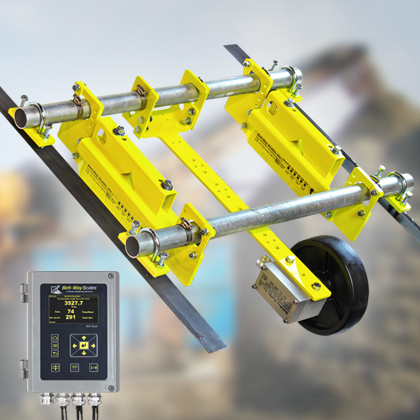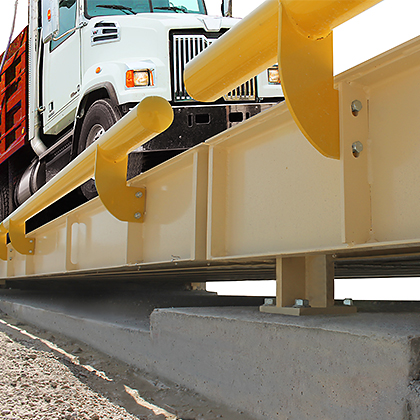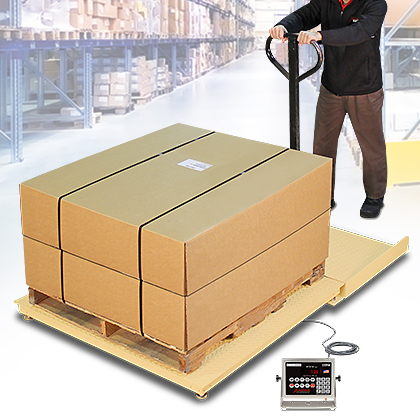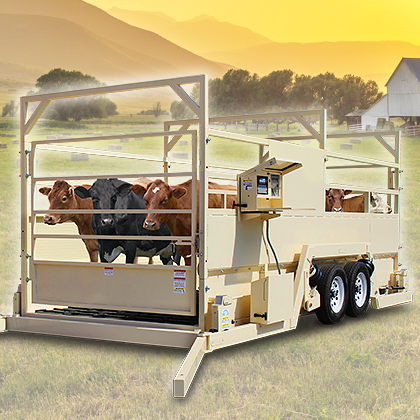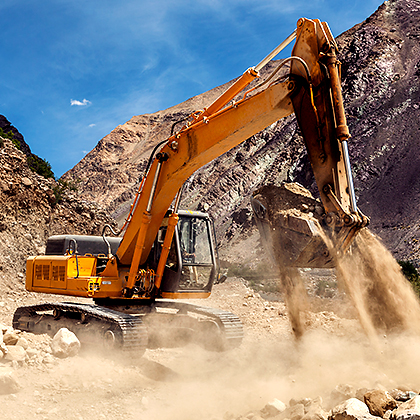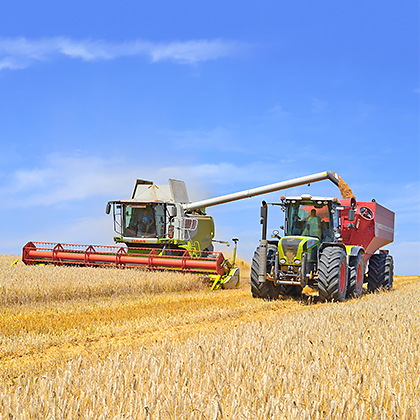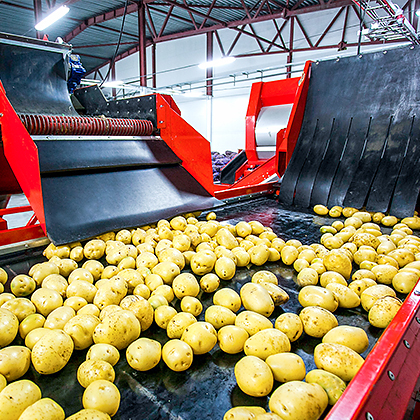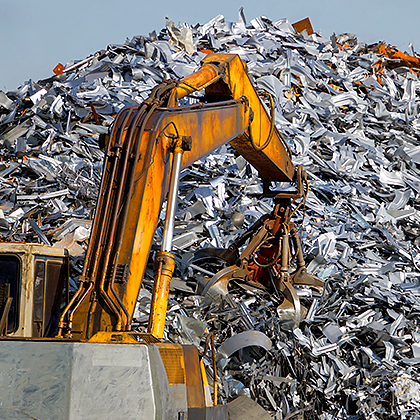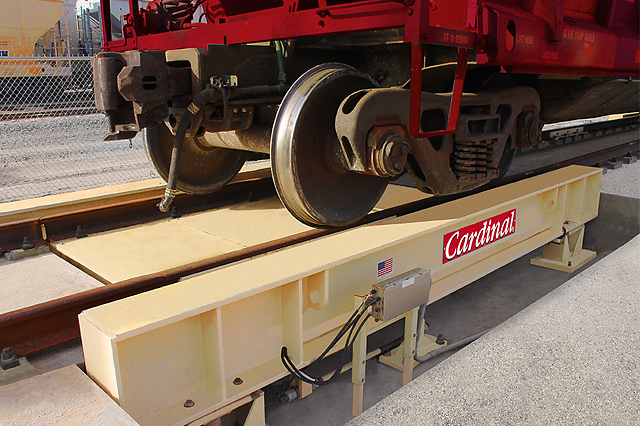Selecting a railroad track scale is something to be taken with utmost consideration due to the time and cost involved for such an important piece of capital equipment. There are many aspects that need to be addressed before the scale purchase is made. Rail scales are heavily configured and customized to meet not only the customer’s needs, but also AAR, NIST, and AREMA specifications. The following article will help prospective scale buyers select the proper rail scale for their rail-based business.
First and foremost, before selecting the scale, the site for installation should be easily accessible, drain adequately, and have satisfactory soil bearing qualities to protect the integrity and extend the life cycle of the scale. Another aspect of installation that requires great consideration is preventing prolonged exposure of water under and around the scale. Any one of these issues can result in erratic readings and might permanently damage the scale.
Once the foundation site has been properly evaluated and deemed acceptable, then the prospective buyer will have to decide what type of scale is most appropriate for their operation. Rail scales tend to fall into two categories: low-profile rail scales and pit-type rail scales. Cardinal Scale has developed unique solutions for both types of railroad track scales that can fulfill the specific needs of either operation.
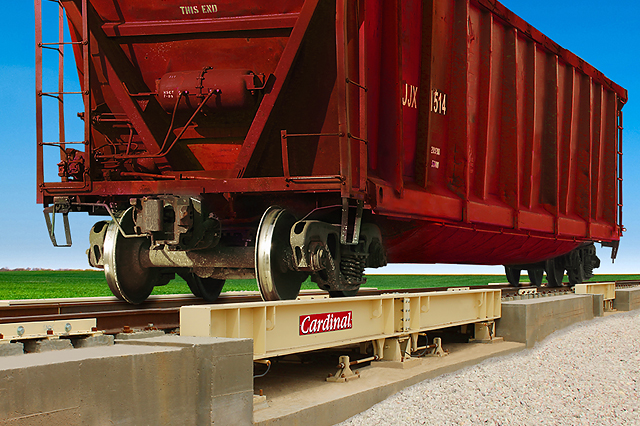
In the low-profile rail scale category, Cardinal Scale manufactures the LPRA series low-profile rail scale. The LPRA series features many distinct advantages when weighing rail freight. A great deal of work is saved from preparing, digging, and maintaining a pit for a rail scale. Additional costs related to concrete work and time needed to install the scale will be much less in comparison to pit-type scales. Heavy-duty electronic and hydraulic load cells provide long-lasting weighing accuracy in such an unforgiving environment. There are also many scale platform sizes that are available to weigh rail cart axles: 13’, 13’ and 13’, 13’ and 26’, 26’, and 26’ and 26’ combinations are highly customizable and provide flexibility for rail car weighing.
Cardinal Scale also provides custom sizes and configurations for the LPRA series, with the options of adding grain dump grating to weighbridges. Having all of these size combinations saves materials, railroad track needed for installation, and the costs associated with inefficiency. The gross ton capacity also varies greatly depending on usage—from 100 tons to 270 tons. The LPRA also meets accuracy in accordance with NIST, AAR, and AREMA requirements. Additionally, the LPRA meets the Legal for Trade Specifications needed in the United States and Canada for NTEP and Measurement Canada.

For pit-type railroad scale options, Cardinal Scale’s RSCA offers a heavy-duty weighing platform. The RSCA is a combination truck and railroad track scale with heavy-duty steel weighbridge designed for pouring in place onsite a 6-inch-thick concrete deck. The scales feature 270-ton gross capacity and platform lengths that range from 60’ to 100’ by 10’ wide. Cardinal Scale’s RSCA design is specially produced to prevent sediment, moisture, and any other impediment from entering the pit and keeping the scale running at exceptional intervals for long periods of time.
Cardinal Scale’s unique RSCA weighbridge design precludes destructive lateral forces from damaging the scale. Rail traffic can be notoriously destructive to rail equipment, so this is absolutely necessary to prolong the service life of the weighbridge and the hardware. The RSCA comes with either electronic or hydraulic type load cells that are capable of accurately providing consistent scale readings under the heaviest of rail cars. Hydraulic load cells carry a lifetime warranty and are resistant to lightning and water damage. The RSCA also meets accuracy in accordance with NIST, AAR, AREMA, OIML, and NTEP requirements. The RSCA series can include optional grain dump modules and multi-platforms for special rail weighing projects.
As far as peripheral equipment is concerned, Cardinal Scale offers many options to make railcar weighing faster and easier. Cardinal Scale manufactures the 225 and 825 indicators to view valuable weight data and transmit it to software. Cardinal Scale’s SB600 remote displays allow for easier clarity and viewing of weight values from a distance. Software solutions provide useful tools to control and record valuable information. The Remote Weigh app controls indicators remotely through a mobile device via Wi-Fi connection. Also, Cardinal Scale’s many printer models offer a plethora of media printing variables for any weight ticket.
No matter the application, Cardinal Scale provides an answer for your rail weighing needs. The combination of rail scale design, durability, and peripheral ingenuity will make a well-needed addition to any rail car weighing operation.

